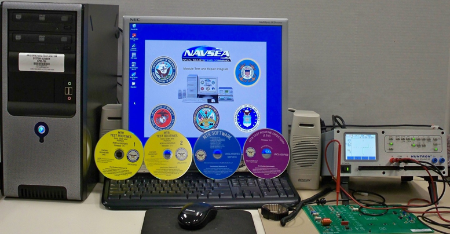Huntron and the DoD - News
Huntron helps Navy MTR Program save millions

The MTR Program’s foundation is built upon what is known as Gold Disk diagnostic test routines.
Gold Disks are used by technicians throughout the Navy and DOD for on-site diagnosis of circuit card assemblies (CCA)
and electronic modules (EM) for repair using 2M and MTR equipment.
Thanks to this program, CCA/EM repairs are accomplished at the lowest practical maintenance level, thereby offsetting
activity costs associated with OEM/depot repair.
Under OPNAV and NAVSEA guidance, the MTR Program develops and provides electrical/electronic module test
and repair capabilities to organizational and intermediate maintenance facilities for both ashore and afloat commands.
In service to the fleet, the Gold Disk program improves the readiness and sustainability of ship and shore systems and their components. It also reduces the number of technical assists allowing Sailors to effect repairs on their own systems and, as such, improves their quality of life because their work is not delayed as they wait for outside assistance.




